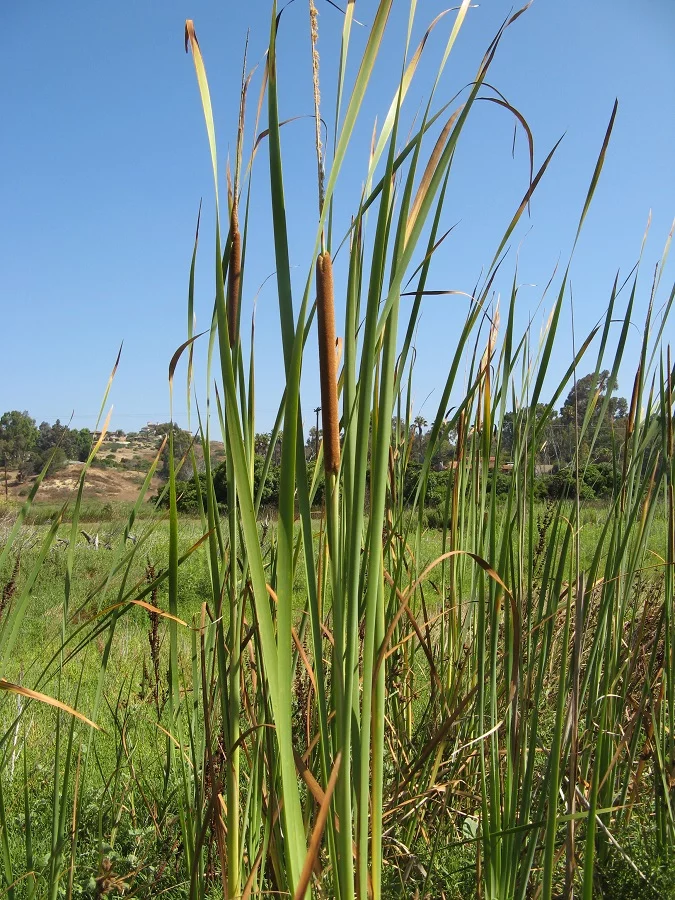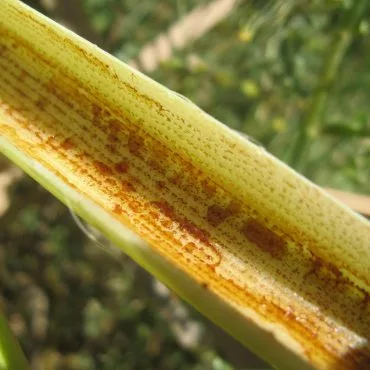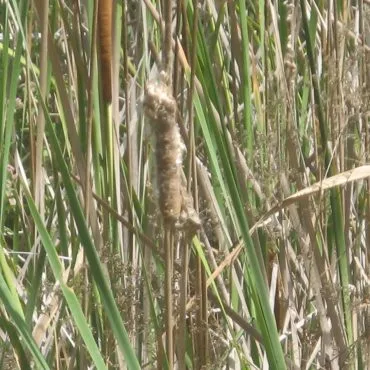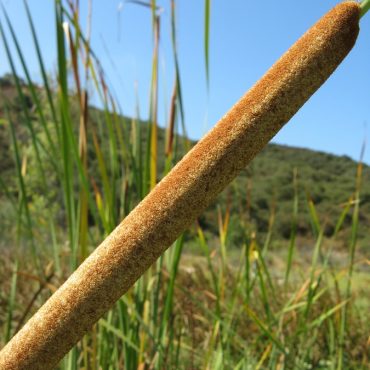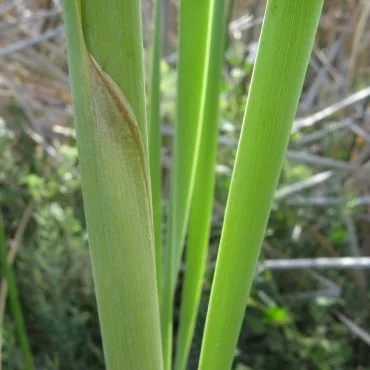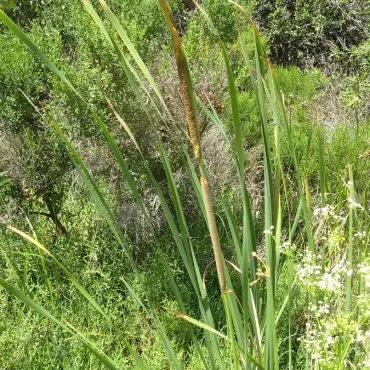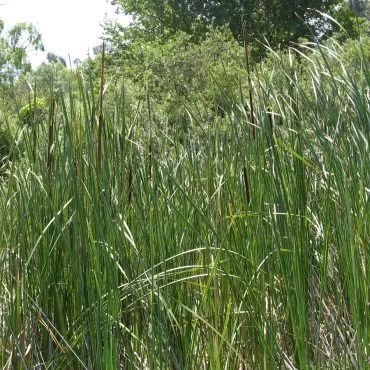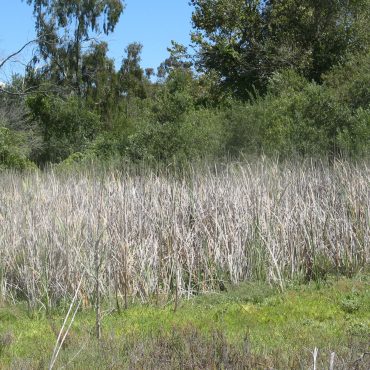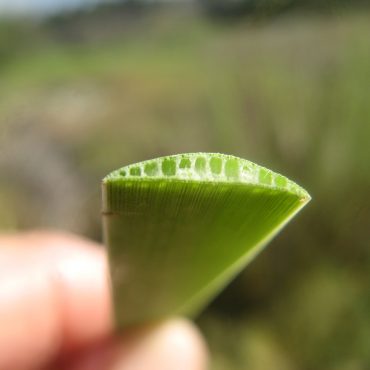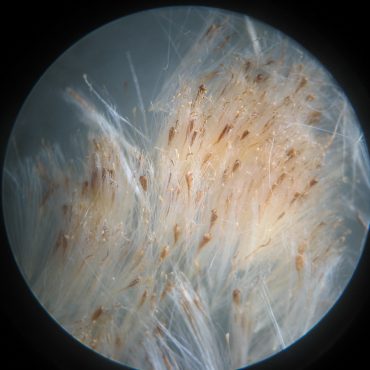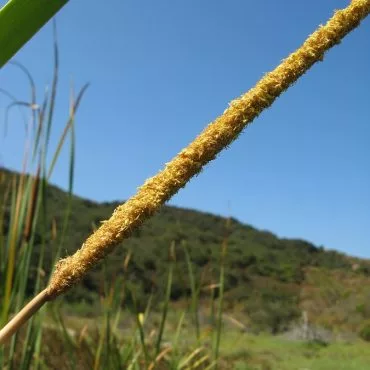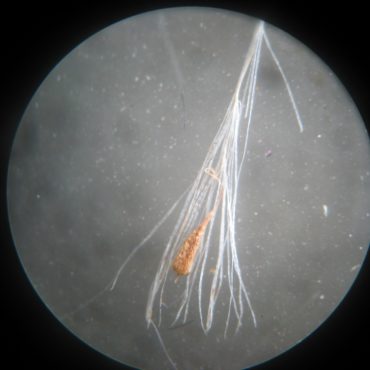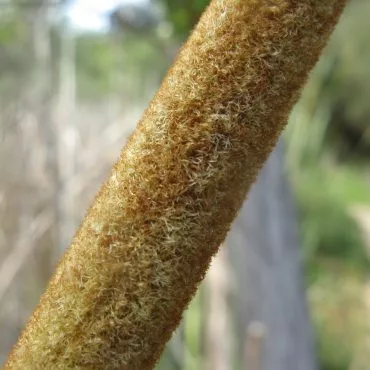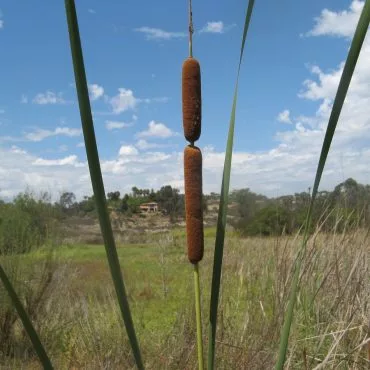Ecology
Southern cattail belongs to a group of perennial plants called “emergent”.124 These are salt or freshwater marsh plants that have their roots anchored below the water surface and their leaves and flowers in the air. Often these are tall, grass-like plants. Other common emergent plants in the Reserve include cordgrass (Spartina foliosa) and bulrush (Schoenoplectus californica).
The emergent strategy appears to maximize photosynthesis by providing a consistent source of water and, at the same time, exposure to full sunlight.41 However, the roots of emergent plants require oxygen for growth and function, and the sediment that surrounds them is characteristically low or lacking in oxygen. Southern cattails have a system of elongated, hollow cells within the leaves (aerenchyma).41 These provide diffusion channels that transfer oxygen from the atmosphere through the vegetative structures to the roots (somewhat like snorkels); at the same time, excess carbon dioxide from the roots diffuses in the opposite direction.
Southern cattail is primarily a plant of freshwater marshes. Germination is strongly depressed by salt, but, once established, the subsurface rhizomes can persist several years in moderately saline conditions and give rise to new shoots when salinity decreases.119 In the Reserve, water input east of Interstate 5 is fresh but the soils beneath contain residual salts accumulated during past incursions of the ocean. In years of normal or above normal rainfall, cattails flourish. Under drought conditions, however, the marsh becomes increasingly saline from water leaching up from the soil, and cattails do poorly.119 The consequent expansion and contraction of the cattail population with annual rainfall can be seen in the two images below. The image in the middle shows a thriving stand of southern cattails in 2010, a period of normal precipitation; the right image shows the same stand in 2014 after three consecutive years of drought.
Anomalous stands of cattails, such as the small patch in the ocean channel by the Nature Center may be explained more by past conditions than by present ones.

